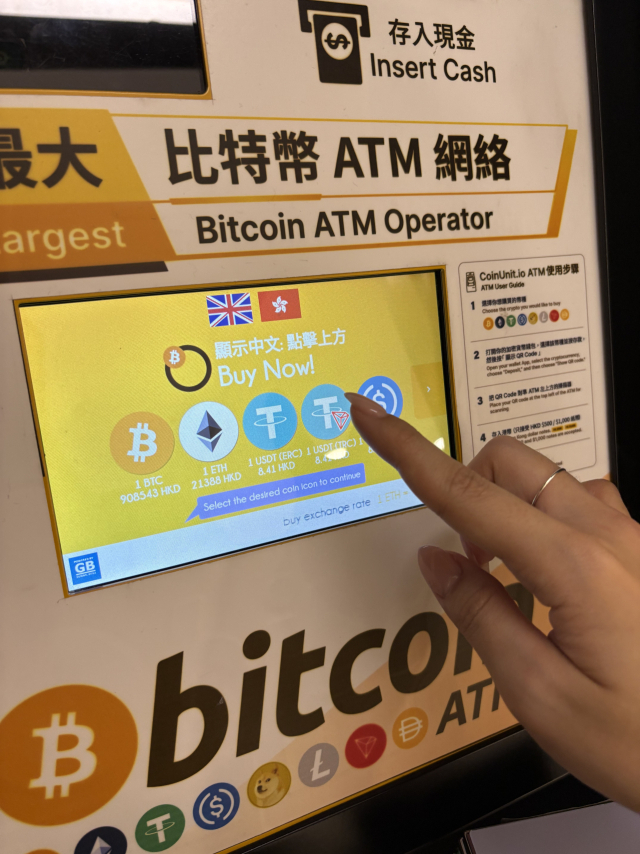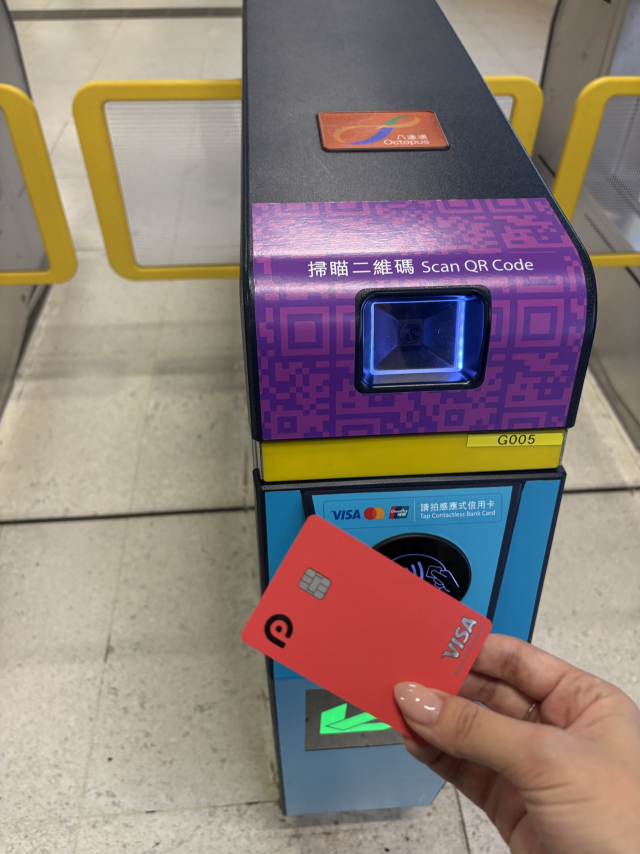
'The 500 Hong Kong dollars invested is equivalent to 52.28 Tether (USDT).'
When 500 Hong Kong dollars were inserted into a virtual asset ATM located at the China Ferry Terminal in Hong Kong on the afternoon of the 7th, the quantity of USDT that could be purchased appeared. The fee was 60 Hong Kong dollars. By simply pressing the 'Buy USDT' button in the bottom right of the screen, the USDT purchase is complete. There is no separate customer identification (KYC) procedure or real-name verification. As long as you have cash, anyone can obtain stablecoins within a few minutes.
Related Articles
- [Investment Perspective] Hot Stablecoins, Valuechain Ecosystem
- [Exclusive] Pursuing Korean Won Stablecoin through Regulatory Sandbox
- Initech, Legal Consultation Contract with Barun... "Building Stablecoin Infrastructure"
- With U.S. Stablecoin Legislation... Institutional Funds Accelerate Virtual Asset Inflow
ATMs where virtual assets, including stablecoins, can be purchased are installed in about 80 locations throughout Hong Kong. They are particularly easy to find in border-adjacent areas such as ferry terminals and train stations. It appears that a natural flow has formed where users from mainland China, where virtual asset trading is prohibited, purchase stablecoins with cash while traveling to and from Hong Kong.
Before inserting cash, users must first provide the virtual asset wallet address to receive USDT. At this time, if a wallet address linked to the 'Redotpay' card that supports stablecoin payments is entered, the purchased USDT can be immediately used for real-life payments. Redotpay is a Hong Kong-based stablecoin payment service provider that issues its own prepaid cards and supports card payments.
When the reporter using the ATM selected 'Tether (USDT) based on Tron (TRC-20)' on the screen, a guide to scan the QR code appeared. The wallet address was opened in the Redotpay app and presented to the device. Immediately, the bill insertion slot at the top of the device lit up. After inserting cash and confirming the purchasable USDT quantity, the entire process was completed with the phrase 'USDT has been transferred'.
However, the actual deposit took some time. For about 10 minutes, there was no status indication in the Redotpay app, causing anxiety, and ultimately, the on-chain transaction history had to be directly confirmed through Tron scan. The reason why the transfer, which should have been completed in 1-2 minutes if based on Tron, took nearly 10 minutes seemed to be due to additional procedures such as internal approval by the ATM company.

The deposited USDT was automatically linked to the Redotpay physical card previously issued by the reporter and could be used for payment. To confirm if actual payment was possible, the reporter boarded the Hong Kong subway. When the Redotpay physical card was placed on the gate terminal, the gate opened with a 'beep' without delay. The destination was the K11 Musea, a complex shopping mall located on the Tsim Sha Tsui coastline. Even on a weekday afternoon, it was crowded with tourists and locals. At the coffee shop on the top floor, after ordering an iced Americano for 38 Hong Kong dollars and presenting the Redotpay card, the staff casually brought it to the terminal. The Redotpay app immediately showed a notification that 4.949 USDT had been paid. This was the amount converted based on the USDT exchange rate at the time (7.851 HKD). There were no complicated procedures such as overseas payment fees or exchange processes.
Such a scene of stablecoins being used as everyday currency is expected to become even more familiar in the future. Michael Gao, co-founder of Redotpay, said, "Stablecoins like USDT are the most frequently used assets on the Redotpay platform," and "Looking at user consumption pattern data, they are using stablecoins for everyday expenses such as groceries, online shopping, and travel expenses. In other words, the adoption of virtual assets in daily life is gradually expanding." The Hong Kong financial authorities are also paying attention to this potential expansion. The Hong Kong Monetary Authority (HKMA) emphasized to this publication that "Stablecoins are an exchange medium that is not bound by the time and geographical constraints of existing payment systems, and an innovative solution that automates and simplifies financial services through their programmable characteristics."
- Hong Kong = Reporter Kim Jung-woo
< Copyright ⓒ Decenter, Unauthorized Reproduction and Redistribution Prohibited >



